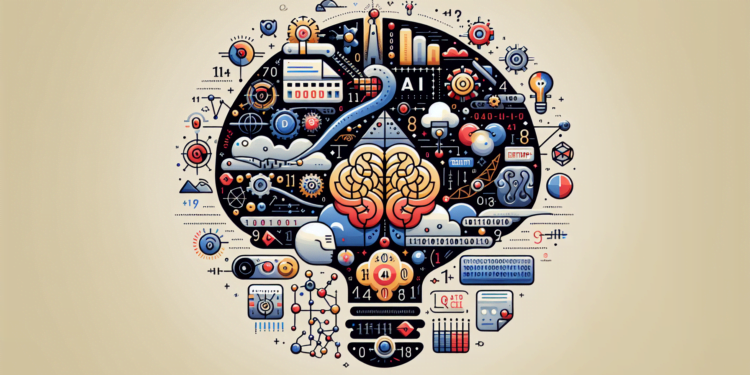Information Theory is a fundamental pillar in the field of Artificial Intelligence (AI), providing the theoretical framework and mathematical tools for the understanding and modeling of communication systems, whether artificial or biological. This article will detail essential concepts of Information Theory that have direct relevance in AI, illustrating how these concepts support the evolution and development of algorithms and intelligent systems.
Entropy: A Measure of Uncertainty
Entropy, within the context of Information Theory, was introduced by Claude Shannon and is a measure of the uncertainty or average information inherent in the possible outcomes of a random variable. In AI, entropy is used to assess the purity of a dataset. It is a key concept in the development of classification models and decision-making algorithms, such as Decision Trees, where it is used to maximize the information gain and minimize uncertainty in data splits.
Mutual Information: Dependency Between Variables
Mutual information measures the amount of information that one random variable holds about another. In terms of AI, this concept is implemented in feature selection techniques and unsupervised learning, like Clustering, where the goal is to understand the dependency among features and how they influence the grouping of data.
Source Coding: Efficiency in Representation
Source coding is part of Information Theory that deals with the optimal representation of data. In AI, techniques such as data compression and dimensionality reduction (for instance, through Principal Component Analysis – PCA) seek efficient ways of encoding information without losing significant characteristics necessary for the learning of a specific task.
Channel Coding Theorem: Communication without Error
This theorem states that it is possible to transmit information over a noisy channel at a maximum rate, known as the channel capacity, without error, under certain conditions. In AI, understanding this theorem is crucial for the design of neural networks and deep learning algorithms that must be robust against noise and capable of generalizing from imperfect data.
Redundancy: Tolerance to Errors
Redundancy refers to the inclusion of additional information in the transmission of a message to recover from potential errors. In AI systems, the practice of this concept is observed in the learning of multiple models and in techniques such as ‘ensemble learning,’ where the combination of different models increases the robustness and accuracy of predictions.
Channel Capacity: The Upper Limit of Transmission
The capacity of a channel is the upper limit on the information rate that can be transmitted with an arbitrarily small probability of error. In AI, this concept influences the assessment of the theoretical limits of communication system performance, and thus, in the design of neural network architectures, especially in deep learning and reinforcement learning.
Rate-Distortion Tradeoff: Compromise between Compression and Quality
This concept from Information Theory deals with the trade-off between the amount of data compression and the resulting distortion. In the field of AI, the rate-distortion tradeoff is considered in image and video compression. It’s essential in the development of self-adaptable encoders and in the training of Generative Adversarial Networks (GANs), where the goal is to maintain the quality of data representation after compression.
Shannon-Hartley Theorem: Bandwidth and Communication
The Shannon-Hartley theorem expresses the maximum data transmission rate through a specified bandwidth communication channel in the presence of noise. A similar principle is used in training neural networks to balance the model’s capacity (width and depth of the network) with the quality and quantity of noise present in the training data.
These concepts represent just a part of the intersection between Information Theory and AI. An advanced understanding of these ideas is crucial for researchers and professionals looking to push the boundaries of what machines can learn and how they can process information.
Case studies, such as the use of entropy in advanced compression algorithms or the employment of mutual information in the improvement of neural network training, exemplify the practical application of Information Theory in advancing AI. The continuous exploration and refinement of these theories will pave the way for future innovations, granting intelligent systems the ability to operate more efficiently and effectively as we enter a future increasingly dominated by technology.






















